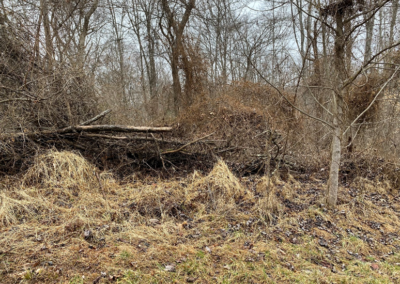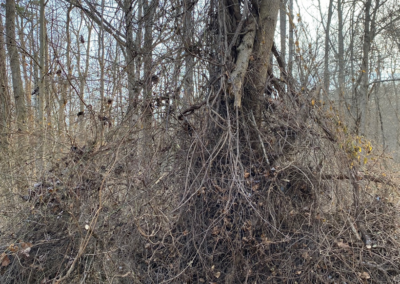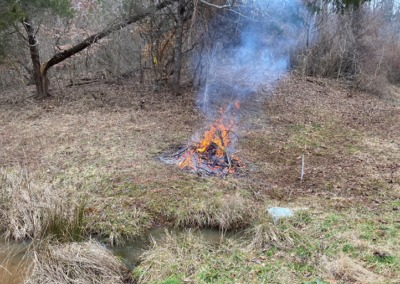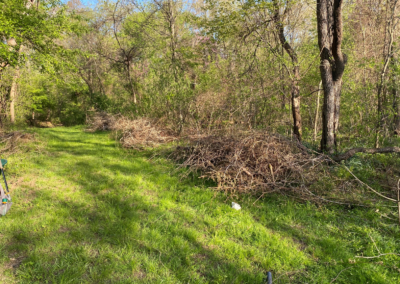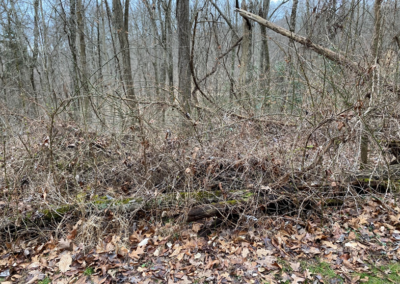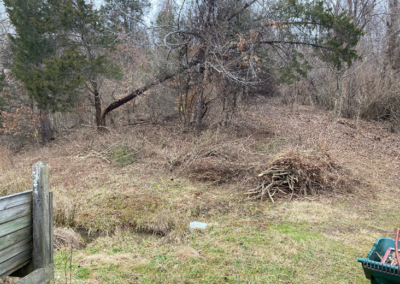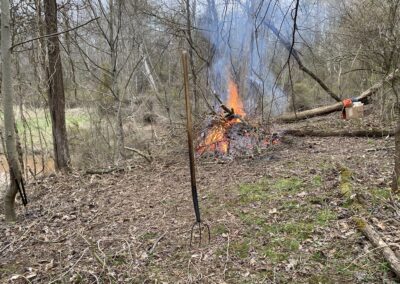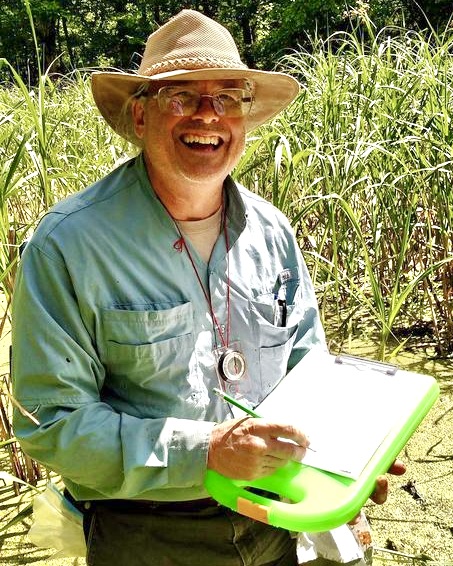
Mark Krivchenia earned an MS in Natural Resources and Environmental Science from the University of Illinois at Urbana Champaign. After retiring from a professional career with the University of Illinois at Chicago, he moved to Marietta to pursue his passion for the science and practice of ecological restoration. Mark currently serves as Steward of the Broughton Nature Preserve, President of Friends of the Ohio River Islands National Wildlife Refuge, and is a Board Member of the Society of Ecological Restoration, Midwest Great Lakes Chapter. He is an active member in the Society for Ecological Restoration (SER).
The Role of Brushpile Fires in Invasive Species Management
February 26, 2024
At the Broughton Nature Preserve we have now been cutting invasives brush along the Red and Blue Trails for almost two years. Mostly we are cutting privet, multiflora rose, autumn or Russian olive, burning bush and oriental honeysuckle. There are others, but these are 90% of the woody invasives along the trails in the Broughton Nature Preserve (BNP).
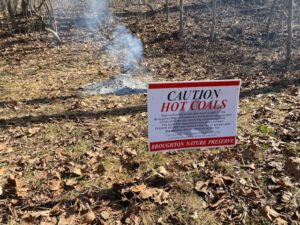 We have restoration workdays weekly, with an average of 5 to 6 volunteers per workday. Six people can cut a lot of invasive shrubs in 2-3 hours! (See photos). We can easily create four to six large piles of brush on a workday. The widespread practice I have observed in SE Ohio is to create brushpiles and leave them in the woods—either throw the brush back into the woods or pile it alongside the path. My observation is that this only creates a better, more protected place for invasives to grow. At the BNP, if you see a large patch of multiflora rose and Japanese honeysuckle, it will almost always be in an old brushpile or growing against a downed tree that has been pushed up against the path.
We have restoration workdays weekly, with an average of 5 to 6 volunteers per workday. Six people can cut a lot of invasive shrubs in 2-3 hours! (See photos). We can easily create four to six large piles of brush on a workday. The widespread practice I have observed in SE Ohio is to create brushpiles and leave them in the woods—either throw the brush back into the woods or pile it alongside the path. My observation is that this only creates a better, more protected place for invasives to grow. At the BNP, if you see a large patch of multiflora rose and Japanese honeysuckle, it will almost always be in an old brushpile or growing against a downed tree that has been pushed up against the path.
Certainly, brushpiles create some habitat for wildlife and birds. But it also encourages more invasive plants to grow—and gives no chance for native vegetation to flourish.
So, what is the solution? Brush pile fires. This is considered a best practice across the Midwest in woodland and forest restorations. Cut the invasive brush and burn it on-site. Try to minimize the size of the fire—the burn scar will sterilize the soil beneath it. In less than a year, you will be hard pressed to see remnant brush pile scars. We also will seed the scar to encourage native plants to grow where we have burned.
Here is how we do to brush pile fires safely.
- Follow any state or local rules. They exist, and we follow them. For example, during certain months of the year (fall and spring) brush fires are not allowed from 6AM to 6PM.
- We have a brush pile burn permit and plan with the Ohio EPA. This explains where and how we will burn brush. The local fire department—the Devola Volunteer Fire Department– signs off on this plan.
- We notify the fire department of when we plan to burn brush.
- I have been trained by the Cook County Forest Preserves on how to manage brush pile burns. Anyone who leads volunteer workdays should be trained.
- We don’t light fires when it is too windy or when it is extremely dry.
- We leave the fire site only when the fire is embers, with a cleared border around the fire, and clear signage that this was a brushpile fire.
You will see our burn scars and recent brush pile fires on the trails at Broughton’s. Please don’t disturb them if you run across them on your walk.

